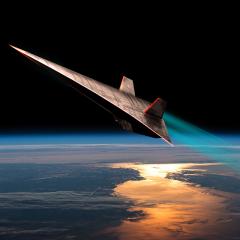Understanding the mysterious force behind the expanding universe is a step closer with the first tranche of data released from the Dark Energy Spectroscopic Instrument (DESI).
University of Queensland astrophysicist Dr Rossana Ruggeri is part of the team using DESI, the most powerful apparatus for photographing light ranges in the world.

“The instrument is able to measure light from more than 100,000 galaxies in one night,” Dr Ruggeri said.
“It uses 5,000 robotic positioners to move optical fibres that capture light from objects millions or billions of light-years away.
“That light tells researchers how far away an object is, helping them to build a three-dimensional cosmic map.
“As the universe expands, it stretches light’s wavelength, making the light appear redder – a phenomenon known as redshift – and the further away the galaxy, the bigger the redshift.
“DESI specialises in collecting redshifts that can then be used to solve some of astrophysics’ biggest puzzles: what dark energy is and how it has changed throughout the universe’s history.”
DESI is supported by the US Department of Energy Office of Science and the National Energy Research Scientific Computing Center.
UQ has strong ties with the USA



